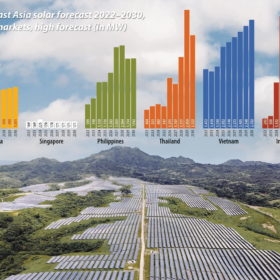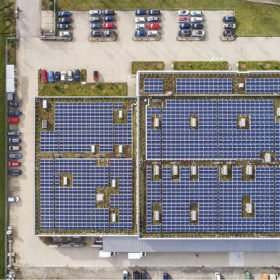The growing pains of PayGo solar
Pay-as-you-go (PayGo) services have long been touted as an answer to the challenge of bringing affordable electricity to hundreds of millions of people currently off the grid. But the business model is not without pitfalls. In some cases, the promise of energy access has turned into a debt burden for the world’s poorest, while high-profile players have already fallen prey to the dynamics of the uncharted market. The industry is now at a crossroads and needs to find a way to strike a balance between rapid growth and customer protection.
History in the making
The urgency of rooftop solar uptake has only been accelerated by the current energy crisis, but the spread of PV to historic and landmarked buildings remains limited. In Europe, historic buildings constructed before 1945 represent at least a quarter of total building stock. To boost uptake, some municipalities are considering a loosening of their protection policies, while researchers are finding interesting byways for installation. Furthermore, building integrated PV solutions are being touted as the ideal compromise between aesthetic continuity and new generation opportunities.
At home on the sea: Marine PV and boats
In 2018, Lyall Burgess and wife Katie started a business called Sun Powered Yachts. The original idea came to them in Tahiti, where the couple had chartered a yacht to explore the French Polynesian island. As Lyall Burgess tells the story, “We were on a charter boat in Tahiti and we were having to run the engine four hours a day to keep up with the fans and the refrigeration. And you’re in this beautiful anchorage, sunshine all day, and have to listen to this engine because the yacht didn’t have any solar panels. So, it kind of all happened at the same time. We found out about these panels, the opportunity was there, we just went for it and created Sun Powered Yachts … and it’s grown ever since.”
Rallying for the ‘Solar+ Decade’
With energy challenges abounding, PV has emerged as a crucial part of the solution – building resiliency, creating jobs, and cutting emissions. In pursuit of energy markets and a system that embraces these features, Solar Energy Industries Association CEO Abigail Ross Hopper is advocating for more stable trade and policy settings, in order to facilitate the expansion of PV, in line with its “Solar+ Decade” goals.
Southeast Asian interconnection
While near neighbors, the electricity generation of the countries of Southeast Asia couldn’t be further apart. Indonesia burns locally mined coal, Malaysia has reserves of oil and gas, while populous Singapore, Vietnam, and the Philippines, depend on fossil fuel imports. They could all benefit from increased solar imports, but higher grid capacities and interconnection are key for an opportunity to unlock the power of the sun.
Key takeaways from RE+ Anaheim
RE+ brought together a record 27,000 people at this year’s renewable energy conference and trade show. The event was marked with a feeling of invigoration, as new policies are launching what the industry is calling the “Solar + Decade.”
Is EU doing enough?
The European Union has set ambitious targets for solar PV expansion, but is Brussels designing the right policies to support growth? Andreas Walstad investigates.
New tools for fossil fuels
Long thought of as adversaries to renewable energy, fossil fuel assets and infrastructure also present opportunities for solar, its green-hydrogen output, and smart energy storage. Natalie Filatoff reports from Sydney on the opportunities and approaches the miners are taking.
After the FITs
Japan’s PV sector remains the third largest in the world in terms of installed capacity, at some 78.5GW, making it one of the leading global PV marketplaces in the last decade. But as the world races to install more solar, it is one of the few markets in recent years that has charted a decline in new installs. An approach involving numerous government agencies is looking to restart the market, and not purely based on feed-in-tariffs (FITs), says Izumi Kaizuka, the director and principal analyst at RTS Corp.
New dawn for Turkish solar
Flourishing commercial rooftop installations will lead to a revival of the Turkish solar market in 2022, with local EPCs and manufacturers profiting. Floating PV and co-located systems, in the form of hybrid arrays, are also emerging as a significant opportunity in a market in which creativity has been a hallmark of success.










